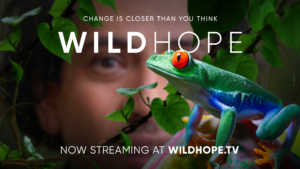An Antidote To the Despair Epidemic

Moderated by: Michelle Alfandari, co-founder Homegrown National Park®
Read time: 19 minutes
It was a thrill to get the call from Wild Hope HHMI Tangled Bank Studio to collaborate with HNP. It’s been a synergistic and exciting relationship that we hope will continue forever! We are thrilled to announce our collaboration with Wild Hope, a PBS series incredibly aligned with the mission of Homegrown National Park®.
Meet Sean B. Carroll, the producer of the series as he talks “biodiversity” with HNP’s co-founder, Doug Tallamy.
Doug Tallamy is an entomologist, conservationist, and educator who has been with the University of Delaware for 42 years, researcher, author including NYT’s best-selling Nature’s Best Hope and co-founder of Homegrown National Park®.
Sean B Carroll is an evolutionary developmental biologist, author, educator, and executive producer. He is Head of HHMI Tangled Bank Studio whose most recent production is Wild Hope, a documentary film series on biodiversity. You can now view current episodes on the PBS Nature YouTube Channel Wild Hope Playlist, and watch for new inspiring episodes released every two weeks.
Here is their wisdom-packed conversation:
MAINTAINING ECOLOGICAL BALANCE
Michelle Alfandari: Let’s kick things off by delving into the vital role of biodiversity in maintaining ecological balance and the overall health of our planet. Doug - why don’t you start?
Doug Tallamy: Sure. It is biodiversity. It is the species, the plants and animals, and everything else in our ecosystems that run those ecosystems. And there's pretty good data showing that the more species that are in an ecosystem, the more stable and more productive it is. And, as you add species, it becomes more stable and productive. But as you take them away, it becomes less stable and productive. We've been doing a lot of taking away in recent years. Those are the ecosystems that keep humans alive.
If we can be very anthropocentric about this, they produce what we call ecosystem services. That's the life support we all depend on. The big problem is that we've been whittling away at that life support ever since we evolved, really. We're now taking away ecosystem function faster than it can regenerate. People are so separated from nature these days, they don't realize that vital connection. So they think we can be totally independent of the natural world, and that's a deadly culture.
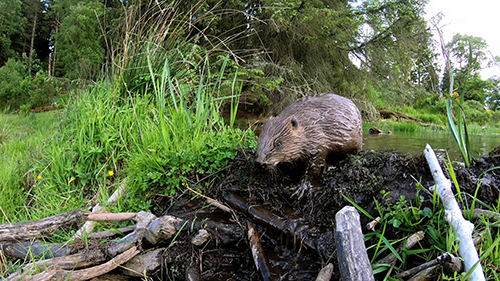
Sean B. Carroll: Doug did a great job of underscoring what biodiversity is, especially important since so many people don't necessarily have a grasp of what biodiversity is. And Doug gave a great, even if anthropocentric, view of the role of all the species in keeping us alive. This is definitely a reciprocal interaction. We can see all over the world where our actions or inactions are undermining our own security left and right. So we could be fearful of all the things that will go wrong if we don't change the path we're on or we can take another approach.
We can simply appreciate that maybe we've had the idea wrong for a while, which is the planet is just here for us. I think there's a pretty strong moral argument that we're one species among maybe 10 million. We're one animal among tens of thousands.
For example, we and our domesticated livestock dominate the planet's animal biomass. I think we're sort of reaching the reckoning of what that unidirectional growth leads to.
There are all sorts of stakeholders out there that might be inspired by different kinds of messages. Some might be the utilitarian self-preservation viewpoint; some might be inspired by, "This is a planet to be shared with other creatures, not for other creatures to be exterminated."
But in the last 50 years, the dramatic change in the abundance and diversity of life on the planet - sends off a lot of alarm bells. We certainly know continuing on this path is a really grim prospect. I don't know psychologically what works for everyone, but we need to activate people from a range of perspectives, be they scientific, economic, theological, whichever.
The big problem is that we've been whittling away at that life support ever since we evolved, really. We're now taking away ecosystem function faster than it can regenerate.
CONSERVING BIODIVERSITY IN BOTH WILD AND HUMAN-DOMINATED LANDSCAPES
Michelle: Thank you both. You talk about reaching people on an emotional and psychological basis to be more aware of biodiversity, of the biodiversity crisis, and taking action. What led you to realize the importance of conserving biodiversity in both wild and human-dominated landscapes?
Sean: It's just logic. I think that because so much of the landscape is dominated by humans. I also don't think we want to beat ourselves up and say, okay, humans are bad and we've done all these terrible things, et cetera.
I think a lot of this is just born out of, when I say ignorance, I don't mean deliberate ignorance, rather a lack of information, of scientific understanding about the connectedness of things in ecosystems. There's a lot that biology has learned in the last 50 years that the folks spread out across the world who fished and farmed and forested wouldn’t have been cognizant of the potential damage they were doing. This includes the damning of rivers all over the world, we harnessed that energy for human prosperity, but we really didn't know what the long-term consequences of that would be.
When you say human and dominated landscapes, it's hard to find places that haven't had a human impact. I think it is pretty obvious that with the percentage of the land surface, coastline, and waterways that have been impacted by humans, we've got to start in those spaces. You hope if we can keep our hands off the wild areas, that nature will take care of itself a little bit. But for the human-dominated areas, we're going to have to be much more intentional.
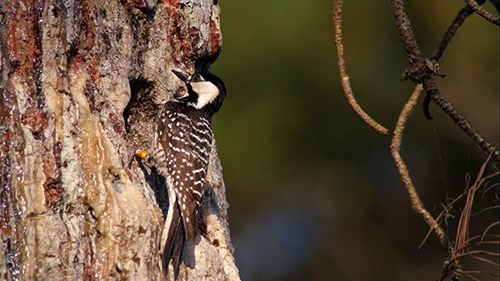
Michelle: Agreed. The damage we did unintentionally can and must now be addressed intentionally. I know you agree, Doug, and that’s what got you focused on human-dominated landscapes.
Doug: Yes. It's the same basic reasoning that Sean just followed. We've got our parks. We've got our preserves. We've got our wild spaces. But we're in the sixth great extinction event, so obviously, they're not working. They're not enough.
The simple solution, in my view, is to practice conservation outside of those parks and preserves, and that's in human-dominated landscapes. We talked about biological corridors connecting those preserves so that plants and animals can move back and forth, but the preserves themselves are still small compared to what they used to be, which means the populations within them are tiny. And when they fluctuate, they tend to disappear. And all populations fluctuate. So rather than make biological corridors in our human-dominated spaces, I want to make viable habitat. I want to toss the idea that humans and nature cannot coexist. I think the only path forward is for us to coexist. And then there are people all over the world showing that that can happen. So that's Homegrown National Park®.
I looked at the figure of 40 million acres of lawn back in 2005, I think it was. It's now 44 million acres of lawn. And I just said, "Well, what if we cut that area of lawn in half that gives us 20 million acres that we could remove from an ecologically dead landscape, restore it with the plants that actually support ecosystem function." How big is that? Well, that would be bigger than most of our national parks added up together. And that's how I came up with the concept of Homegrown National Park.
We can simply appreciate that maybe we've had the idea wrong for a while, which is the planet is just here for us.
Sean: I think people don't understand what's possible either, right? Doug is certainly driving this narrative - that we can create things that are better. And I think that a really significant segment of the population would like things that are better. They would like more nature in their yards and communities. These are things that people really do value, but there are a lot of things that are done unconsciously that push nature away. So it's sort of just changing people's awareness and showing them what is possible. And the resilience of nature, if given a chance, is so impressive, and when people get a sense of that, they'll see results in a short amount of time with a little bit of effort.
Michelle: Sean what impacted your shift to focus on biodiversity?
Sean: There was a singular experience - an epiphany - that impacted my thinking. I'm an indoor biologist, so I made my living inside labs studying genes and invisible things. But I was inspired to be a biologist because I loved wildlife, and I think probably at a deeper level, I started worrying about it, because I was seeing what people were publishing and saying, and I thought, wow, I better get wise to what's going on.
I started spending a lot more time with ecologist colleagues and learning what was going on. And I had the opportunity to visit Gorongosa in Mozambique in 2015. And this was a place in 2000 that was essentially left for dead. It had lost over 95% of its large mammals after 20 years-plus of civil war.
It was considered a hopeless situation. I was there in 2015 and saw what only about 10 or 12 years of work had accomplished in terms of reviving what was once a jewel before the civil war. I was there also two months ago, and it's only a better story since.
Seeing the magnitude of rebound in Gorongosa in the first 10 or 12 years, and now we're about 20 years into that project, is astounding. It's so revelatory to see that nature can come roaring back from almost complete devastation. That's a story that we've enjoyed telling around the world, and I think has given a lot of folks hope around the world, nature can make a comeback. And for me visiting, there was my epiphany to sort of be as much of a messenger for that perspective in the ensuing years.
If we're going to do conservation on private property outside of parks and preserves, it's those private property owners who are the future of conservation in these human-dominated landscapes now.
KEYSTONE SPECIES
Michelle: I love that story. It is putting hope into action with visible results which is exactly what HNP is about.
You both talk about keystone species in a similar but different way. Doug, would you explain the use of keystone species, particularly in the context of native plants, to regenerate biodiversity?
Doug: I focus on keystone plants. We can work at both ends of the food web here, but plants, of course, are capturing energy from the sun and turning it into food. And that's the food that supports just about all the animals on the planet, but only if that food gets to the animals. Most vertebrates don't eat plants directly. They eat invertebrates that ate those plants. So it turns out that, at least in temperate zone terrestrial ecosystems, it's caterpillars that are transferring more energy from plants to other animals than any other type of plant eater.
So what's a keystone plant? It's a plant that makes a lot of caterpillars. And when we start looking at how many caterpillars it takes to make one nest of a chickadee, one nest of a tiny bird, it's 6,000 to 9,000 caterpillars.
When you think about the plants in your yard, are they generating that many caterpillars? In most cases, no. So what we did was look at host plant records around the entire country and rank plants in terms of their ability to make caterpillars. It turns out that just 14% of our native plants are making 90% of the caterpillars that are out there. Those are the ones we call keystone plants. And in North America, oaks lead the way. Our latest research shows that oaks support over a thousand species of caterpillars compared to other good native plants. For example, Tulip trees support 21, so there are huge differences just among native plants. And then when you go to non-native plants, caterpillar production really drops off. So when we're talking about restoring function to a yard, you're going to get a lot farther faster if you focus on what I have labeled keystone plants.
Michelle: Thanks, Doug. It’s so logical to focus on keystone plants. It also takes the guesswork out of what to plant, which is especially important for those of us who are not gardeners.
Sean, your definition of keystone is similar but different. Please tell the story of how “keystone” prompted your use of storytelling as a means of connecting people to nature and biodiversity.
The simple solution, in my view, is to practice conservation outside of those parks and preserves, and that's in human-dominated landscapes.
Sean: Similar but different. Doug's insight is brilliant, and I think very original. What happened with respect to my understanding of keystones was I stumbled across a review article by some eminent ecologist that was maybe written around 2010. I thought, oh my God, not only did I not know this, but I don't think most of my brethren in biology understand this. Even though “keystone” had been around as a concept for probably 40-plus years, I don't think it was widely grasped by the professional biology community that keystones are species that have a disproportionate effect on the abundance, diversity, and stability of ecosystems. There were some things about keystones that sort of reminded me of some processes that I understand at the more molecular level.
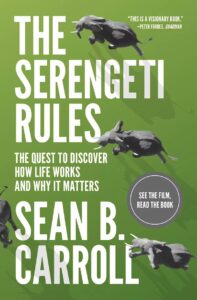 I thought, well, I should probably talk about this and use my experience as a storyteller to tell the story of the discovery of keystones and why they matter. I took the gamble because to wander far outside of your disciplinary expertise is inviting decapitation by the people who really know stuff. But I think in writing The Serengeti Rules, I wrote something that was so pro-ecology that people forgave me for whatever sins I committed to telling that story. Because historically in academia, there have been some not good relationships between biologists of different stripes. It got to the point where molecular biologists and ecologists weren't housed necessarily in the same building, didn't publish in the same journals, and didn't understand each other's objectives.
I thought, well, I should probably talk about this and use my experience as a storyteller to tell the story of the discovery of keystones and why they matter. I took the gamble because to wander far outside of your disciplinary expertise is inviting decapitation by the people who really know stuff. But I think in writing The Serengeti Rules, I wrote something that was so pro-ecology that people forgave me for whatever sins I committed to telling that story. Because historically in academia, there have been some not good relationships between biologists of different stripes. It got to the point where molecular biologists and ecologists weren't housed necessarily in the same building, didn't publish in the same journals, and didn't understand each other's objectives.
That is tragic for the teaching of biology. It's tragic for the communication about life. So that's a way of getting to why I, an indoor biologist, would write a book like The Serengeti Rules and proselytize about keystones and trophic cascades and make films about pioneering ecologists.
I think that “keystone” is a very sticky concept, but when you give people a chance to understand it, it makes it easier for the general public to hop on board and support or participate in activities that identify and save keystones.
EVOLUTIONARY PROCESSES SHAPING CONSERVATION STRATEGIES
Michelle: In both your approaches, keystones are key to healthy habitats. Habitat loss and habitat degradation also figure prominently in both your work. Sean, your research has explored evolutionary processes that shape the diversity of life. Could you elaborate on how understanding these mechanisms could influence our conservation strategies, especially in the face of rapidly changing environments?
Sean: The timescale of evolution is pretty long, and the timescale of these ecological interactions is pretty short. So evolution is all these ecological interactions compounded over time. I think when you have some grasp of the medium to longer-term picture of life on Earth, you do have some perspective of just how fast things are changing on the planet right now, and how exceptional that is relative to, say, the last half billion years history of life on the planet.
Evolutionary science gives you a perspective, a timeframe. It doesn't give you any sort of specific toolkit, but as species blink out or as ecological interactions disappear, it underscores just how dramatic those changes can end up being on the planet. So the evolutionary perspective tells you more of what's at stake than what governs conservation strategies.
I want to toss the idea that humans in nature cannot coexist. I think the only path forward is for us to coexist. And then there's people all over the world showing that that can happen. So that's Homegrown National Park®.
PRACTICAL STEPS WE CAN TAKE
Michelle: You make it clear that there is an urgency to take action based on how fast things are changing on the planet. Doug, your work on the importance of native plants for supporting insect and animal populations has gained significant attention and traction. You've successfully spurred many to action in the yards, corporate grounds, and communities to plant native and remove invasive plants. Could you highlight some practical steps that individuals, farmers, urban dwellers, and communities can take to create and maintain native plant habitats to support local ecosystems?
Doug: Yes I can, but that's a whole book.
Michelle: I was going to say, this might take hours - how about some highlights?
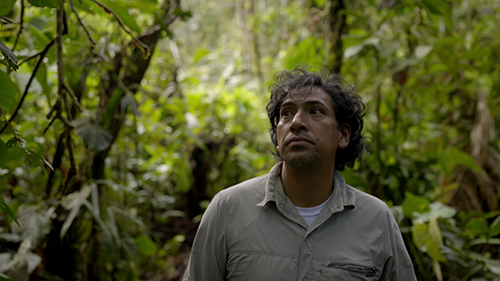
Doug: OK, we'll just start very briefly. The interactions that Sean talked about, we're realizing they're critically important. It's not the loss of species that's important, but it's how those species interact with each other. It's the loss of biological interactions that has huge ramifications for our ecosystems.
One of the most important interactions is how insects interact with plants. Because if they're transferring most of the energy from those plants, they've got to be able to have access to them. This is where the native plant connection comes in, because native insects are, in general, adapted to the defenses of native plants. So the monarch can eat milkweed because it has interacted with it for millions of years. And when we bring in plants from other continents, they're very poor at doing that. So what we want to do is maintain those interactions.
What can individuals do? They can choose the plants that support the most interactions. That's the keystone species concept. We have lost the monarch butterfly because of what we've done to just tiny strips of land along roadways through our agriculture, primarily Midwestern, but right to the East Coast. We've turned what used to be called weeds, which was milkweed and New York ironweed and goldenrod and all the asters and evening primrose, all the things that supported our pollinators, the monarch, and the vast amount of the diversity that was left in the Midwest, we took that away and planted grass that has to be mowed. So now we've taken a little diverse strip along thousands of miles of roadway and turned it into a lawn that's supporting nothing. So what can a farmer do? We can put it back. And they're starting to do that in Iowa. They're putting prairie plants back along roadways.
They can return the hedgerows that used to support the bulk of biodiversity in our ag fields. We took most of the hedgerows out to make it convenient for large farm machinery, but many of them can go back. And if we make them diverse native plantings instead of hedgerows of Asian plants like autumn olive and buckthorn, then they're supporting a lot of biodiversity.
We can add what we now call prairie strips. You put a strip of prairie right through your corn, right through your soybeans, get CRP funding, and the USDA supports this. You put it perpendicular to the flow of water off that land and it intercepts topsoil. It intercepts the pollutants that you've added to your field, all the extra nitrogen and phosphorus, and it's a great site for all those pollinators we're trying to promote. So it's a win-win for everybody.
And then finally, what can a grower do? They can minimize the use of neonicotinoid seed coatings, which are there for no reason. If you compare seed coatings, a field planted with seed coatings versus a field without seed coatings, there's no boost in yield. So this is a preventive measure. We're treating for pests we don't even have, and only 5% of that material is taken up by the plant. The other 95% washes off into our aquatic systems or blows away on dust, and we don't even know what it's doing. And it’s highly persistent. Neonicotinoids are 7,000 times more toxic to insects than DDT was. So it's a significant input of a toxin that doesn't need to be there. These are all things that an individual grower can address.
You know what has devastated our rangeland, particularly in the West? You'd think it's cattle, and yes, overgrazing has contributed, but it was the elimination of beavers. They managed the watershed so that you didn't have channelized streams. You had broad marshes. That supported the native grasses that the cattle did very well on. So you take the beavers out, all the streams become channelized, and the water table drops and it becomes a desert. And we did that a hundred years ago.
These are things that can be fixed. That's that resiliency we talked about.
It's so revelatory to see that nature can come roaring back from almost complete devastation. That's a story that we've enjoyed telling around the world, and I think has given a lot of folks hope around the world, nature can make a comeback.
BARRIERS TO UNDERSTANDING THE BIODIVERSITY CRISIS
Michelle: What impresses me so much from what you are both saying is that wherever we live we can individually make a positive impact on regenerating biodiversity. It’s sort of becoming ‘partners’ with nature.
Hope figures prominently for both of you. Doug's New York Times bestselling book, Nature's Best Hope, and Bringing Nature Home serve as the foundation for Homegrown National Park, turning hope into action. Wild Hope provides compelling and inspiring stories of hope and how individuals have actually made a difference where they live.
Both of you emphasize the importance of public awareness and engagement, of regenerating biodiversity and fostering a deeper connection between people and the natural world, spurring them into action. Sean, what do you see as the biggest barrier for people understanding what biodiversity and the biodiversity crisis actually is?
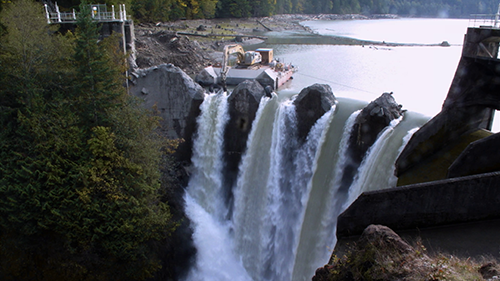
Sean: I think there may be multiple barriers, and some of that is just awareness. Doug has just enumerated a whole bunch of fundamentals that I think if people appreciated, they'd be more than happy to act on if they just knew a little bit more. So some of this is just an information gap, not resistance.
What makes humans tick? Well, they need to have good information. When action conflicts with other priorities, of course, it’s tricky, but some of this doesn't conflict with anything. There are a lot of doable things that we can simply tackle if we knew better.
Another barrier is this question of hope. I think there's an epidemic of hopelessness. There's an epidemic of despair. And again, to clarify the roles here, my contributions are storytelling. They're not material out in the world. My primary research has not illuminated any fundamental ecological principles or anything like that, but storytelling is integral to humanity. It's how we build our picture of the world, what stories inspire us, who we emulate, what we believe. We really need to change the narrative from despair to hope. And we all know there are lots of things that may be driving people's despair. But with respect to the natural world, one might sense that destruction is inevitable and that there's nothing we can do. That's what Wild Hope is all about. Wild Hope is spotlighting people who are taking action at all sorts of different scales, generally in their local area or region, reversing course, and seeing results in a relatively modest period of time. If you just think about societal trends, a lot of them are just driven by the narrative, whether it's peace and love and rock and roll, or in this case, there's hope that whatever narratives you attach yourself to, they do drive action.
I think people are thirsting for authentic hope. Hope doesn't mean just blind optimism. Hope acknowledges that the outcome is uncertain, but that perhaps with some effort, things might turn out better. And I think there's plenty of evidence that with some effort, things could turn out better. So we need to hear those stories, and we need to propagate, in a movement, sort of a wave of hope.
It's not the loss of species that's important, but it's how those species interact with each other. It's the loss of biological interactions that have huge ramifications to our ecosystems.
A NEW DEFINITION OF HOPE
Michelle: I was certainly inspired by watching the Wild Hope episodes. I like to think that the 21st-century definition of HOPE is taking the action that will realize the outcome hoped for.
Sean: We just want to spotlight that change equips people with the information and the tools to contribute.
Michelle: Doug, you have been talking “hope” for around 20 years and now it’s a grassroots movement. How did that thinking start and evolve?
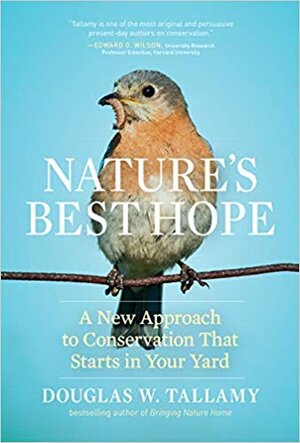 Doug: You are nature's best hope. So the book, Nature’s Best Hope, is really about why I think so. And there are good reasons. It is the public that owns the country. 78% of the country is privately owned; 85% east of the Mississippi is privately owned. If we're going to do conservation on private property outside of parks and preserves, it's those private property owners who are the future of conservation in these human-dominated landscapes now. But as Sean said, a lot of them feel hopeless. They feel powerless.
Doug: You are nature's best hope. So the book, Nature’s Best Hope, is really about why I think so. And there are good reasons. It is the public that owns the country. 78% of the country is privately owned; 85% east of the Mississippi is privately owned. If we're going to do conservation on private property outside of parks and preserves, it's those private property owners who are the future of conservation in these human-dominated landscapes now. But as Sean said, a lot of them feel hopeless. They feel powerless.
What can one person do? Well, that's my message. One person can do a lot of things. One person can shrink the lawn. One person can put in a pollinator garden. One person can fire Mosquito Joe. One person can change the light bulb from white to yellow and stop killing insects at night. One person can remove the invasive plants from their property. One person can plant keystone species on their property. These are things that my wife Cindy and I have done. And the response is remarkable.
I'm still counting the number of moth species that now make a living at our house. I got another new one last night. I'm up to 1,219 species that weren't here when we moved in. It was previously mowed for hay. So this works. And the message is, stop worrying about the whole planet. Just worry about your piece of the planet. The piece that you say you own, well, you also own the responsibility of restoring that.
And it's motivational. It's extremely satisfying. It's a lot of fun to put it back and see it happen. And so that is what gets people excited. They do want to do something. They feel powerless. I'm saying you're not powerless. You are empowered, and you can do it tomorrow. You can do it this afternoon.
Sean: Can I just say amen?
Doug: Absolutely.
Hope doesn't mean just blind optimism. Hope acknowledges that the outcome is uncertain, but that perhaps with some effort, things might turn out better. And I think there's plenty of evidence that with some effort, things could turn out better.
Sean: Look at the changes in our country in the last 100, 120 years. I think in 1900, maybe 40% of the country grew up and worked on farms. You have a great understanding of nature when you're raising plants in livestock and going through breeding cycles and dealing with disease. As Doug said, we're much more disconnected from nature now. We're much more remote from nature. And that change has happened, let's just put it sort of an evolutionary timeframe, in a blink of an eye that humanity has lost its contact with nature. So I'm optimistic in the sense that I think people do care. They do feel enriched when they can have that contact and have some sense of connectedness to it. So we have to really be creative and persistent in generating those opportunities. And you have to start young, right? You have to start with your own little kids.
Schools and schoolteachers need these opportunities to cultivate interest and affection for nature from an early stage. And it's going to take lots and lots of initiatives from many, many different directions to change our very urbanized and somewhat sterilized life or perspective from where it was a hundred years ago.
And the message is, stop worrying about the whole planet. Just worry about your piece of the planet. The piece that you say you own, well, you also own the responsibility of restoring that.
Doug: We live in an age where communication has never been easier. It's instantaneous. We need to take advantage of that to engage people. We need to get these critically important issues into the national discussion. We need to bring it down to the the individual. That means it's got to be on all media from radio to TV to social and print media. This is where what you do, Sean, is so important because people don't read. They watch.
Sean: Right.
Doug: So you've got their attention. You're producing how they want to entertain themselves. It's an enormous tool these days, to educate and inspire action. If we inspire even a small planting, it will deliver results - more insects and birds, and that spurs the connection with nature.
Michelle: Thank you, Doug and Sean. What a great pleasure to spend time with you. You both offer up a great antidote to the despair epidemic, turning HOPE into action. Sean, you inspire with entertainment and Doug and HNP provide the easy blueprint for regenerating biodiversity where we live, learn, work, play and pray. Each of us can make what we HOPE for - a healthy planet right where we live.
TAKE ACTION!
- Watch the PBS Nature YouTube Channel Wild Hope Playlist.
- View Keystone Native Plant Guides to regenerate biodiversity in your yard or on your balcony.
- Add your new or existing native plantings to the Homegrown National Park® Biodiversity MAP to log the impact your native habitat is making!

